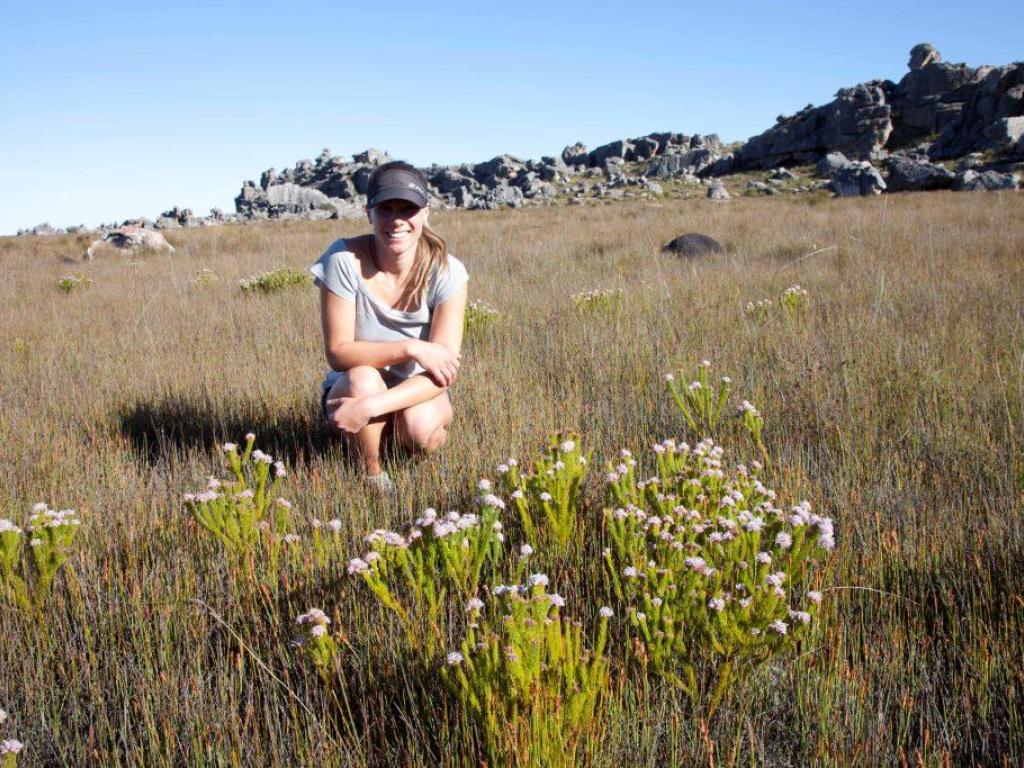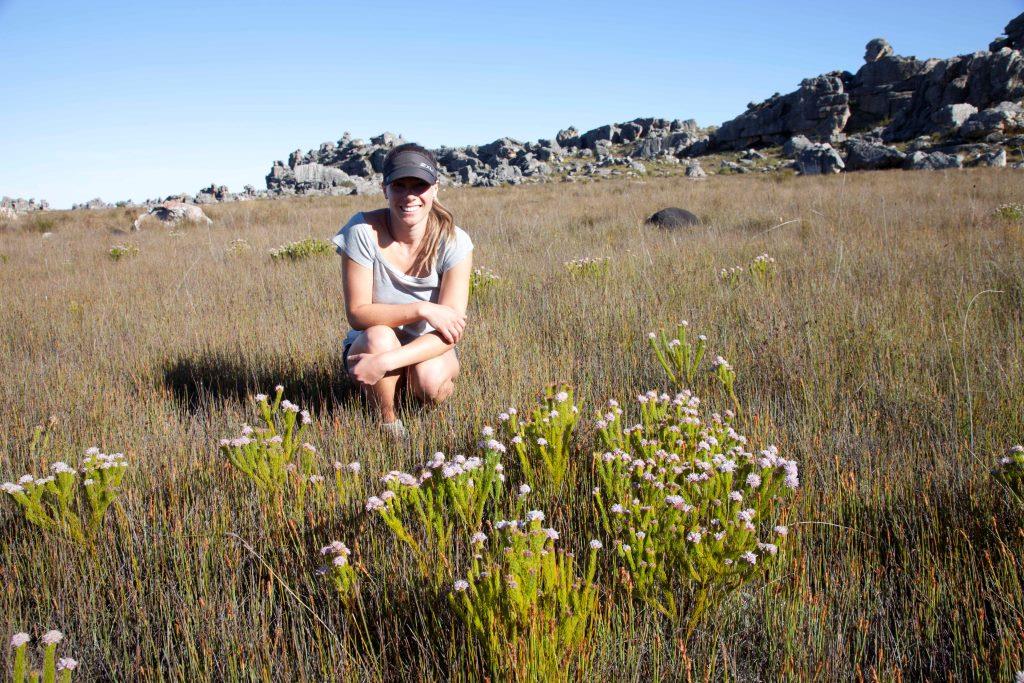Into the Groot Winterhoek Wilderness


Petra with Sorocephalus scabridus, a threatened Protea species facing high risk of extinction (Photo: S. Jack)
Two PCU-ers, Petra Holden (de Abreu) and Sam Jack, recently returned from a fieldtrip in the Groot Winterhoek Wilderness Area (GWWA). The GWWA forms part of the Cape Floristic Region World Heritage Site and is a Protected Area located in the Western Cape just north of Tulbagh. It is a part of the Cape Fold Belt and is extremely rugged, only accessibly on foot with the mountain peaks rising to a height of 2077m.
Petra is a PhD student researching 40-60 years of social-ecological change in the GWWA within a national framing focused on drivers of conservation in mountain catchments in South Africa. During this recent trip, Petra (with the help of Sam) completed the remaining repeat photos and vegetation transects for GWWA (overall total photos: 79 and transects: 72): Next year Petra will move onto the social component of the project, working with landowners in the surrounding mountain catchments.

This matched repeat photograph, taken in the remote Paarden Vallei area of the Grootwinterhoek Wilderness Area, captures the change in a large erosion donga over the last ~35 years. Historical records suggest that the donga was formed in the early 1900s during an extreme rainfall event. No doubt regular burning and grazing at that time played a role in making the slope susceptible to erosion. Some parts of the current donga are over 4 m deep! Fortunately the donga profile seems to have remained stable since the 1980s, with the donga floor being well vegetated and the walls reasonably stable.

|
An example of a descending point transect in the Grootkliphuis area. A measuring tape is affixed between two droppers located 25 m apart. One end of the transect is GPSed and marked with a rock cairn to help future samplers located the transect. Sampling occurs at 1 m intervals by vertically descending a wooden dowel and recording the first species that the dowel touches. (Photo S. Jack) |
Article by Petra Holden and Sam Jack
